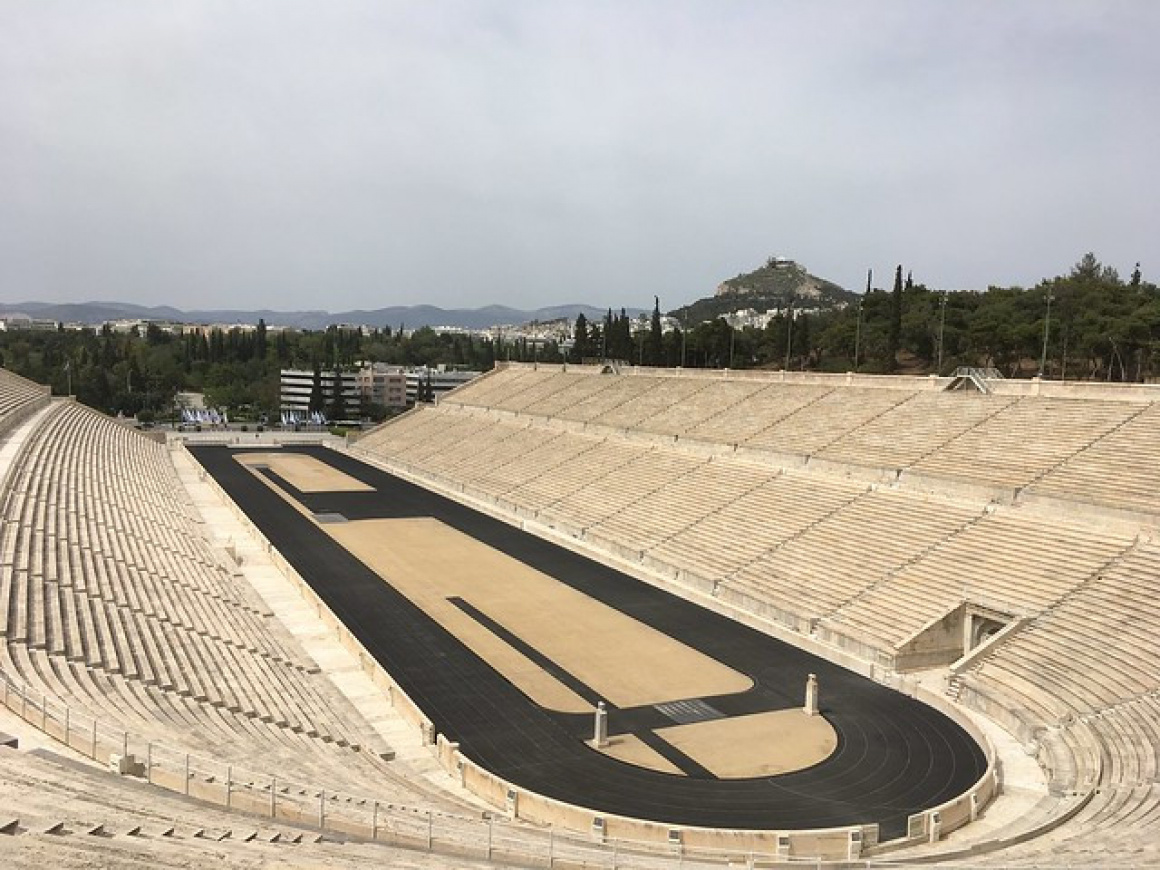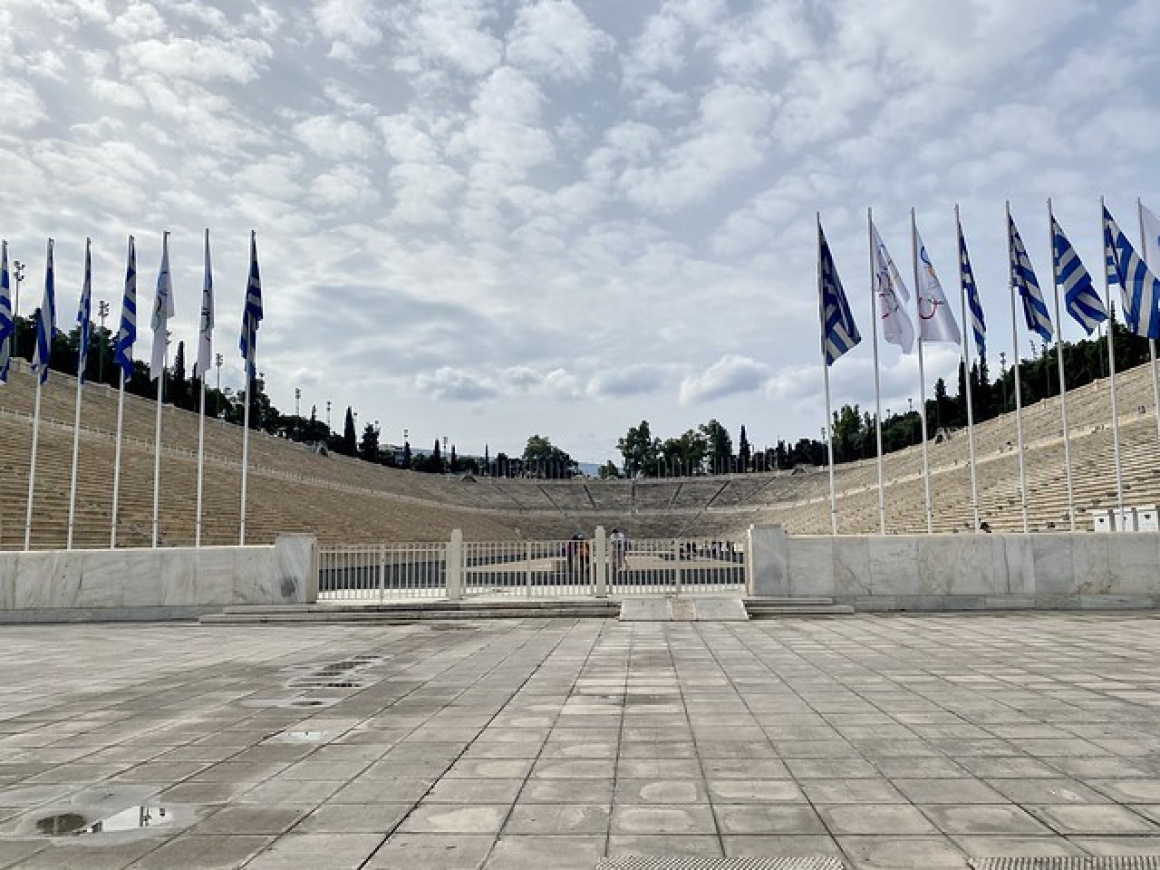Panathenaic Stadium, or Kallimarmaro as many locals call it, stands as a gleaming marble icon of Greek heritage, intertwining the ancient athletic traditions of Athens with the legacy of the modern Olympic Games. Tucked between the verdant National Garden and the neighbourhood of Pagrati, this landmark is often referred to as the “old Olympic Stadium of Athens” thanks to its role in the first modern Olympic Games in 1896. Built entirely from shimmering Pentelic marble, it is the only stadium of its kind in the world and has become a must-see for those ticking off what attractions to see in Athens.
\rThis marble-clad masterpiece is not just a relic of the past but a living monument. Its white Attic marble reflects the legacy of ancient sports, the revival of the modern Olympic Games, and the enduring cultural heritage of Greece. The stadium remains a key symbol of global significance, entwined with the history of the Hellenic Olympic Committee and Greek sport.

 'Panathenaic Stadium' - Attribution: pantelispan
'Panathenaic Stadium' - Attribution: pantelispanA Bridge Between Past and Present
The Panathenaic Stadium Athens has its roots in ancient festivals that celebrated Athena, the city’s patron goddess. Built in 329 BC by the Athenian orator Lycurgus, it originally featured wooden seating before being transformed into a marble marvel in 140 AD under Herodes Atticus during the Roman era. This renovation expanded its capacity to hold 50,000 spectators and ensured its place as a venue for the Great Panathenaea, a grand festival in honour of Athena.
\rCenturies later, the stadium faced neglect, its marble stripped during the Middle Ages. However, its revival began in the 19th century when philanthropists like Evangelos Zappas and Georgios Averoff spearheaded its reconstruction. Architect Ernst Ziller conducted substantial excavations in 1869-1870, and a marble renovation was completed in time for the first modern Olympic Games in 1896. The stadium’s reconstruction paid homage to its historical significance, reviving its splendour and solidifying its status as a global icon.
Best Times to Visit
Many travellers arrive in the early hours to take advantage of the cooler morning air and the soft sunlight that illuminates the marble stands. Others prefer late afternoon, when the stadium’s golden hues create a memorable backdrop for photographs. On quieter days, there is a delightful tradition that not every guidebook mentions: if you take a moment to stand still on the track, you might just hear your footsteps echo against the marble, a subtle reminder of the centuries of athletic endeavour that have taken place here.
Experience the Spirit of the Stadium
Though tours are available, one of the more unusual ways to experience this old Olympic Stadium Athens is by taking a gentle jog around the track. It is open for public running sessions on specific days, offering a chance to follow in the footsteps of countless athletes who have been inspired by the spirit of competition. The high marble seating tiers also present a gorgeous perspective of Athens; from the very top, there is a beautiful view of the Acropolis rising above the cityscape.
\rIn 2004, the stadium played a starring role in the Athens Olympic Games, hosting archery events and serving as the finish line for the Men’s and Women’s Marathon Races. This seamless blending of history and contemporary use has cemented its reputation as a "living" archaeological site.

 'Panathenaic Stadium, Athens, Greece' - Attribution: w_lemay
'Panathenaic Stadium, Athens, Greece' - Attribution: w_lemayA Treasure Trove of History
History buffs will be delighted by the onsite exhibition space, which showcases an impressive collection of memorabilia from various Olympic Games, including rare posters, photographs, and artefacts from the inaugural 1896 Games and beyond. This captivating display highlights the evolution of the modern Olympic movement while celebrating Greece’s pivotal role in its revival.
\rOne particularly unique feature of the stadium is a marble inscription honouring the benefactors who played a critical role in its restoration. This inscription serves as a poignant reminder of how history and philanthropy intersected to preserve this iconic venue, safeguarding its legacy for future generations.
Perfectly Positioned for Exploration
Located near the Temple of Olympian Zeus, the stadium is a convenient starting point for exploring Athens. After your visit, saunter along the chic cafes of Pagrati or delve into history further at the Acropolis and Parthenon.
A Living Legacy
Throughout its long history, the Panathenaic Stadium has hosted everything from ancient festivals to modern celebrations. Its use as a concert venue in recent decades—featuring international stars like Depeche Mode, Joan Jett, and Greek icon Vassilis Papakonstantinou—adds a contemporary vibrance to its storied past. The stadium also served as the site of the Olympic Flame handover ceremonies for the Beijing 2008 and London 2012 Games, reaffirming its enduring connection to the Olympics.
\rAdditionally, the stadium's depiction on commemorative coins and Olympic medals solidifies its place in global memory. Few places so seamlessly unite antiquity and modernity, making a visit to this iconic arena an essential experience for anyone exploring Athens.

